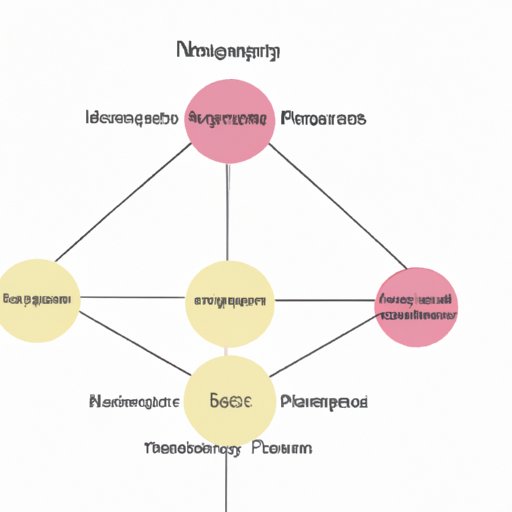Introduction
Network science is an interdisciplinary field that studies networks and their properties, including the structure, dynamics, and evolution of complex systems. It has become increasingly important in our digital world as the number of connected devices continues to grow exponentially. Network science can be used to analyze and understand the behavior of networks, from social networks to telecommunication networks. In this article, we will explore the different aspects of a first course in network science, including the different types of networks, graph theory and algorithms, real-world networks, and network topologies and protocols.
Exploring the Different Types of Networks
A network is defined as a set of connected nodes, or vertices, and edges, which are the lines connecting the nodes. Networks can be used to represent many different types of relationships, from physical connections such as roads and bridges to abstract connections such as friendships and family ties. Some common types of networks include social networks, communication networks, transportation networks, biological networks, and computer networks.

Introduction to Graph Theory and Algorithms
Graph theory is the study of graphs, which are mathematical structures used to represent relationships between objects. Graphs are made up of two components: vertices and edges. Graph theory can be used to solve a variety of problems related to networks, such as determining the shortest path between two nodes or finding the most efficient way to route traffic through a network. Graph algorithms are a type of algorithm specifically designed to work on graphs. Common graph algorithms include breadth-first search, depth-first search, minimum spanning tree, and shortest path algorithms.
Examining Real-World Networks and Their Applications
Real-world networks are networks that exist in the physical world. Examples include transportation networks, such as roads and railways; communication networks, such as the Internet; and social networks, such as Facebook and Twitter. These networks have a variety of applications, from helping people get from one place to another to enabling them to communicate with each other. Network analysis can be used to identify patterns in the data, such as hotspots of activity or areas where traffic is more likely to flow. Network analysis can also be used to optimize the performance of a network, such as reducing congestion or improving communication efficiency.

Understanding Network Topologies and Protocols
Network topology is the arrangement of nodes and edges in a network. Common network topologies include star, bus, ring, mesh, and tree. Each topology has its own advantages and disadvantages, and the choice of topology depends on the application. Network protocols are the rules and conventions used for communication between two or more nodes in a network. Common network protocols include Ethernet, TCP/IP, and Wi-Fi. Understanding network topologies and protocols is essential for designing and managing efficient and secure networks.
Conclusion
Network science is an interdisciplinary field that studies networks and their properties. A first course in network science covers the different types of networks, graph theory and algorithms, real-world networks, and network topologies and protocols. Understanding these concepts is essential for designing, managing, and analyzing networks in the modern world. Network science provides a powerful toolset for understanding and optimizing networks of all kinds.

Benefits of Understanding Network Science
Understanding network science has a wide range of benefits, from improving communication efficiency to identifying areas of risk. It can also help to optimize the performance of networks and reduce the cost of maintaining them. According to a study by IBM, “Organizations that use analytics to monitor and improve their network operations experience significant improvements in operational efficiency, customer satisfaction, and cost savings.” [1] With the increasing importance of networks in our digital world, understanding network science has never been more essential.
[1] IBM. (2017). The Benefits of Network Analytics. Retrieved from https://www.ibm.
(Note: Is this article not meeting your expectations? Do you have knowledge or insights to share? Unlock new opportunities and expand your reach by joining our authors team. Click Registration to join us and share your expertise with our readers.)
